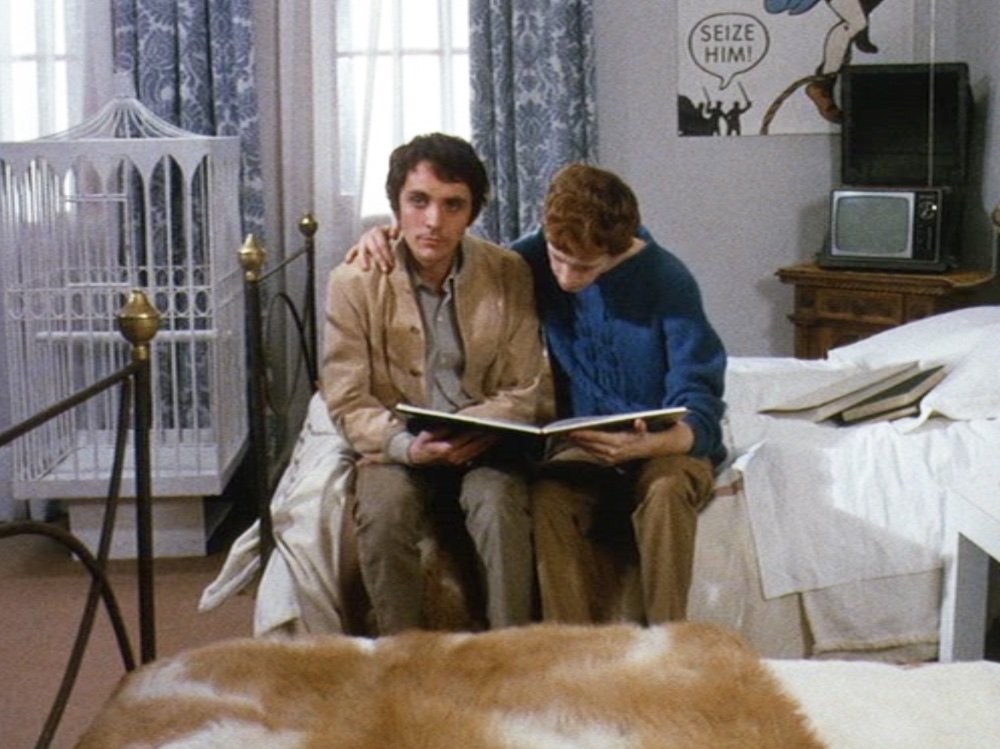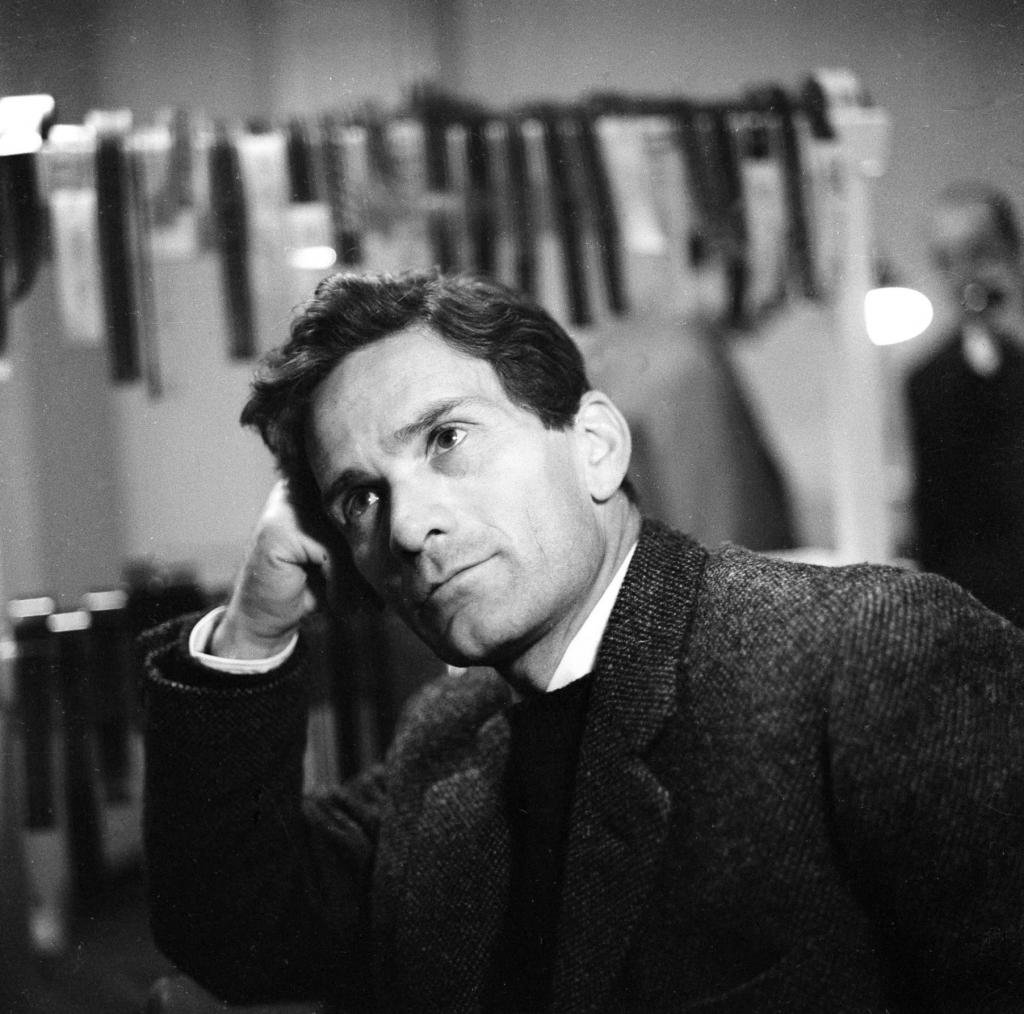Pasolini's “Theorem” is a scandalous film, which to this day causes a lot of controversy. The film turned out to be truly ambiguous due to the ambiguity of the scenes and interpretation. The creator of the project even had to stand trial - critics accused the director of blasphemy and obscenity. Why is this film adaptation so excited the public?
About the film
The picture is a parable in the art house genre. Initially, Pazolini's book was published, which served as the basis for his future parable. The “theorem” in the cinematic version was presented in 1968, splitting film critics into two camps. Some viewers called the director a real genius and a prophet, while others accused of blasphemy. In general, the project is interpreted as a religious allegory and a lesson in psychoanalysis. As in his book, in The Theorem, Pasolini tries to convey the thesis about the identity of Christian doctrine and sexual attraction. The scenes in the film are periodically completely silent and presented in sepia tones, but this does not prevent the viewer from understanding what is happening on the screen.
The plot of Pazolini's "Theorems"
The plot is focused on the family of a Milanese manufacturer. The characters lead a rather measured and boring life, which the director decided to emphasize with soundless scenes and frames in a sepia tone. Soon, their world begins to transform - the picture becomes colored, sounds appear. The first reason for these changes is the visit of the postman who delivered a telegram about the imminent arrival of a certain nameless visitor. Further in the frame is the sudden guest himself, who manages to “seduce” all the inhabitants of the house with his gaze, including the maid and the head of the Paolo family.
When the hero of Terence Stamp leaves the city for unknown reasons, the family returns to a boring lifestyle. However, detachment does not last long - the characters begin to fill the spiritual void in an absurd way.
Unexpected plot development
Further events of “Theorems” by Paolo Pasolini acquire a completely unexpected turn. Impressed by the meeting with a charming seducer, each member of the family begins to experience longing for his departure. After several depressing days, Paolo's daughter, the beautiful Odette, is in a state of catatonia. Son Pietro, crazy, trying to recreate on paper the image of a stranger. The wife of an industrialist engages in erratic sexual relations, trying to somehow calm down her raging passion. In this case, the manufacturer himself decides to leave the usual thing and transfers the plant to the disposal of subordinates, completely losing interest in life. The maid Emily believed that she had become a Christian martyr.
Film interpretation
What exactly is the meaning of the "Theorem", Pazolini told the audience himself. According to him, the picture clearly shows that the bourgeois is always wrong and does everything wrong, no matter what noble impulses he experiences. The interpretation of the director in the Marxist style suggests that only a servant belonging to the lower class could count on salvation in his story. The filmmaker notes that he sought to present Stamp as a metaphysical celestial creature, in which some will see dark forces, while others will be a deity.

The name of the film is quite justified in connection with the geometric accuracy of plot lines. Many scenes in the parable are repeated twice. The villa, on which the action unfolds, is also subject to strict symmetry. Attentive viewers will notice that the seduction of the heroes of the parable took place in the same manner as their confidential conversations with the mysterious guest. And households avoid communicating with each other, preferring to conduct dialogs exclusively with the character of Stamp.
Interesting Facts
At the heart of the film by Pierre Paolo Pasolini's "Theorem" is his story "Guest". For the whole picture, the actors spoke only 923 words. The owner of the house and the visitor did receive several remarks from the director at all. The parable managed to get into the hundred most underrated films according to Beyond the Canon.
Despite the ambiguity of reviews of the “Theorem,” Pazolini managed to win the trial on charges of obscenity. During the announcement of his decision, the judge noted that the erotic scenes in the film are exclusively ideological in nature, and the film itself is a real work of art. "Theorem" nominated for the Golden Lion Award.
Key role performers
The director entrusted the role of a charming seducer to Terence Stamp, who is known for acting in such popular projects as “Changing Reality”, “Collector”, “Three Steps in Delirium” and others. Despite his rather advanced age, the actor continues to act in films. Massimo Girotti appeared in the guise of a manufacturer Paolo, who during his career managed to appear in more than a hundred films, including Medea and Red Tent. The wife of the head of the family was portrayed by the Spanish actress Sylvanas Mangano, who also played in The Adventures of Odyssey, Dune. The role of the son of Paolo took on Andres Jose Cruz Sublette, who then starred in only two films.
Odette's daughter was played by Anna Wyazemsky, who ended her acting career in the late 80s, having managed to star in the films "Chinese Woman", "Pigsty" and others. The image of the handmaid Emilia went to Laura Betty, an Italian actress who also played in Sweet Life, Twentieth Century, and other paintings.
About the director of "Theorems"
The future writer and cinematographer Pier Paolo Pasolini was born in Italy on March 5, 1922 in a military family. From an early age he was fond of literature, preferring Dostoevsky, Rimbaud. During his life, the famous Italian published seven collections of poems, and the last of them was published in the year of his death. Pazolini had an active political position, calling himself a Catholic communist. The famous director began his career in cinema by writing cues in other people's scripts, but subsequently he made films himself, one of which was the scandalous “Theorem”.

Pazolini's life was tragically cut short seven years after the premiere of his controversial parable - the director was found murdered near Rome on one of the beaches of Ostia. To this day, various assumptions are made about the death and possible killer of a celebrity, despite the fact that soon after the discovery of the corpse, a certain Pino Pelosi, who was engaged in prostitution, admitted that it was he who killed the director. According to the young man, Pazolini wanted to use his services, but was very rude, which led to the conflict.